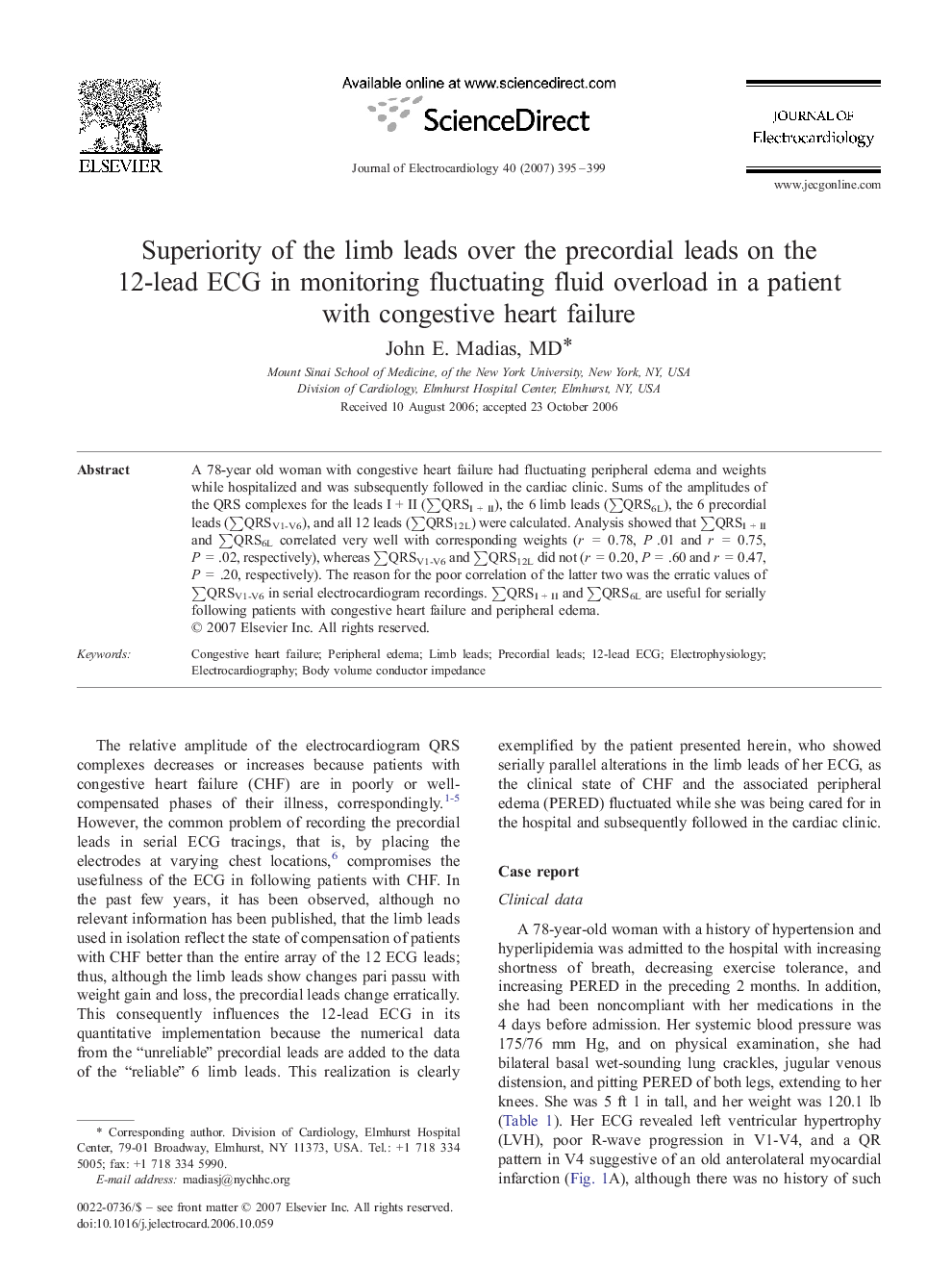| Article ID | Journal | Published Year | Pages | File Type |
|---|---|---|---|---|
| 2969127 | Journal of Electrocardiology | 2007 | 5 Pages |
A 78-year old woman with congestive heart failure had fluctuating peripheral edema and weights while hospitalized and was subsequently followed in the cardiac clinic. Sums of the amplitudes of the QRS complexes for the leads I + II (∑QRSI + II), the 6 limb leads (∑QRS6L), the 6 precordial leads (∑QRSV1-V6), and all 12 leads (∑QRS12L) were calculated. Analysis showed that ∑QRSI + II and ∑QRS6L correlated very well with corresponding weights (r = 0.78, P .01 and r = 0.75, P = .02, respectively), whereas ∑QRSV1-V6 and ∑QRS12L did not (r = 0.20, P = .60 and r = 0.47, P = .20, respectively). The reason for the poor correlation of the latter two was the erratic values of ∑QRSV1-V6 in serial electrocardiogram recordings. ∑QRSI + II and ∑QRS6L are useful for serially following patients with congestive heart failure and peripheral edema.
